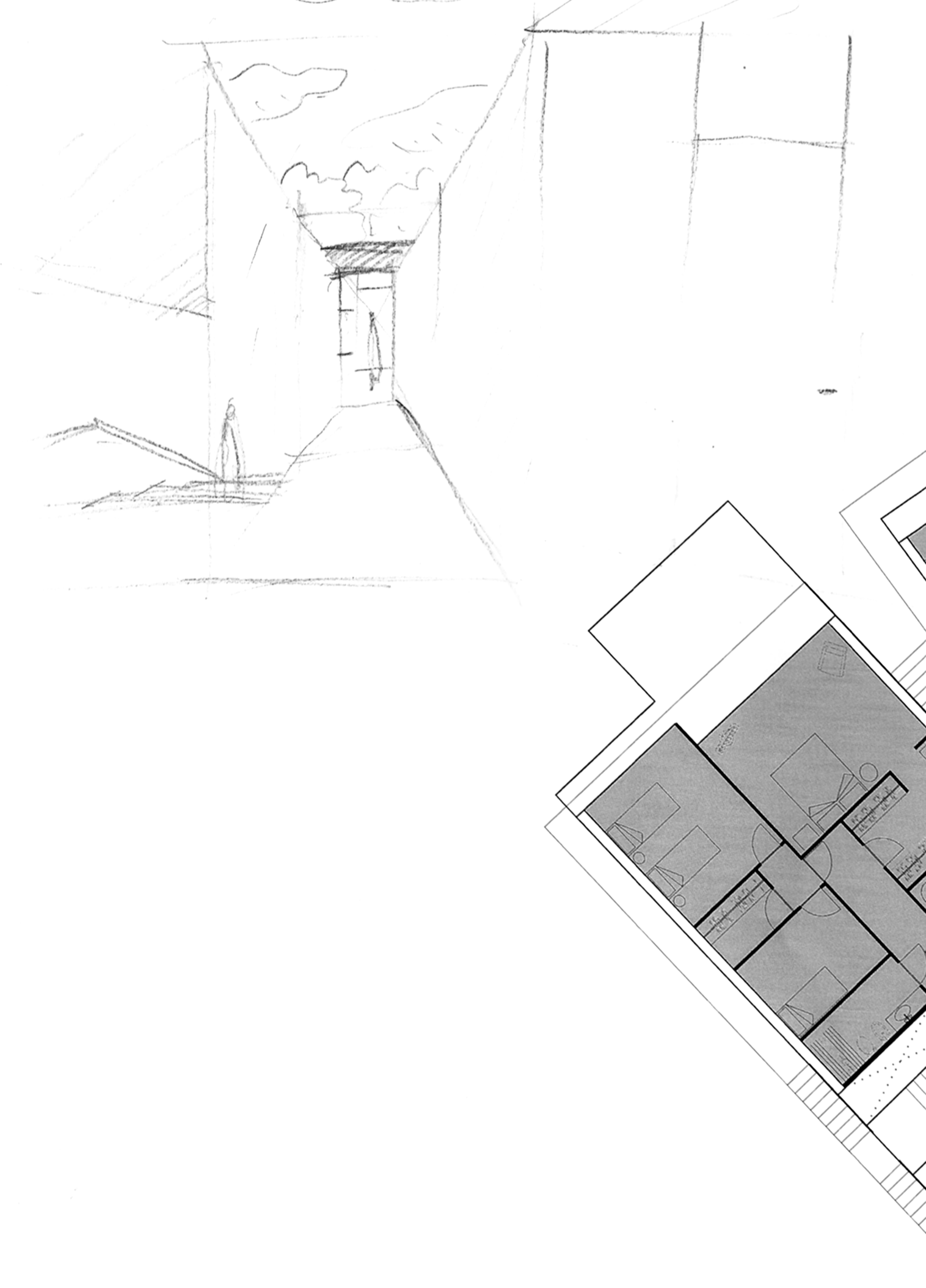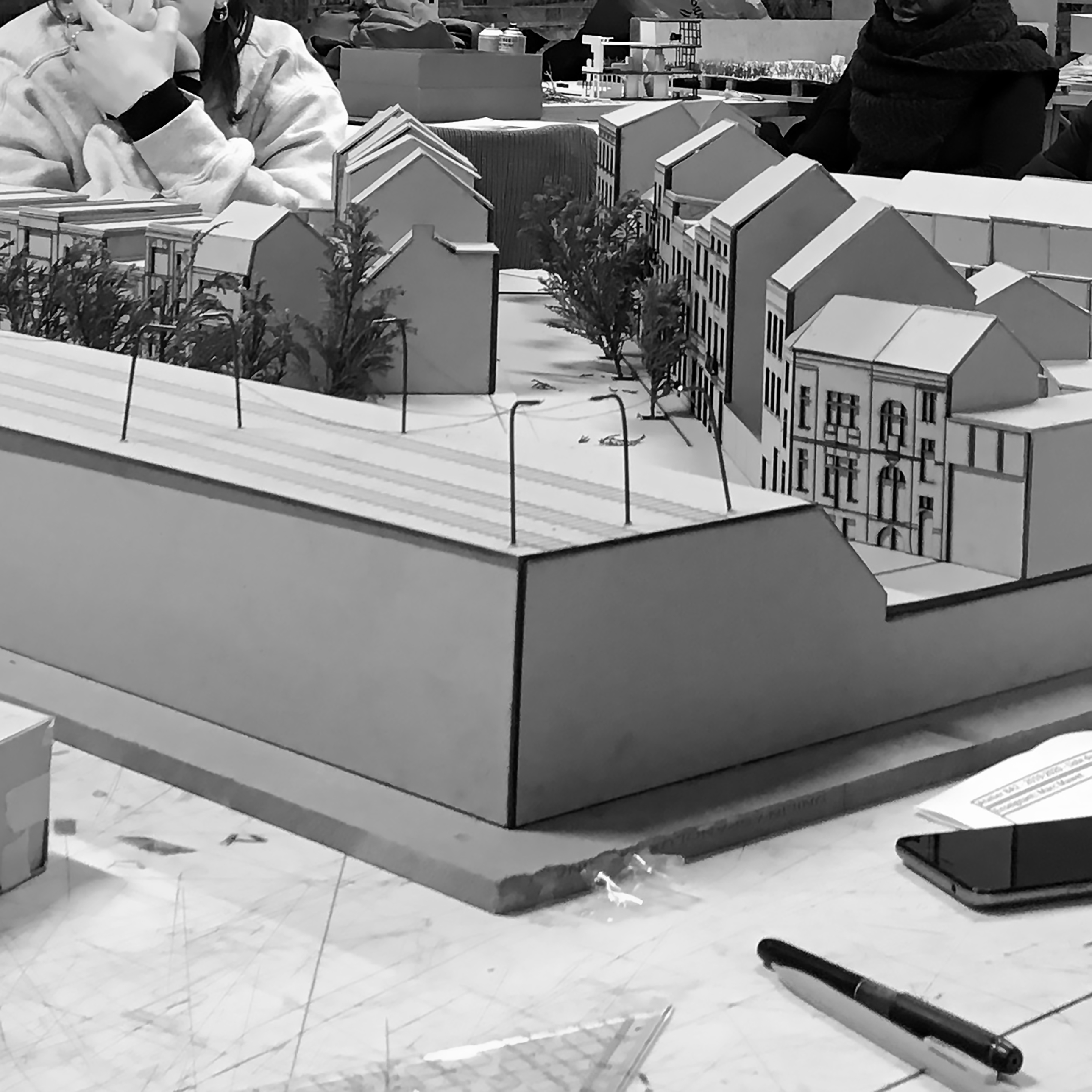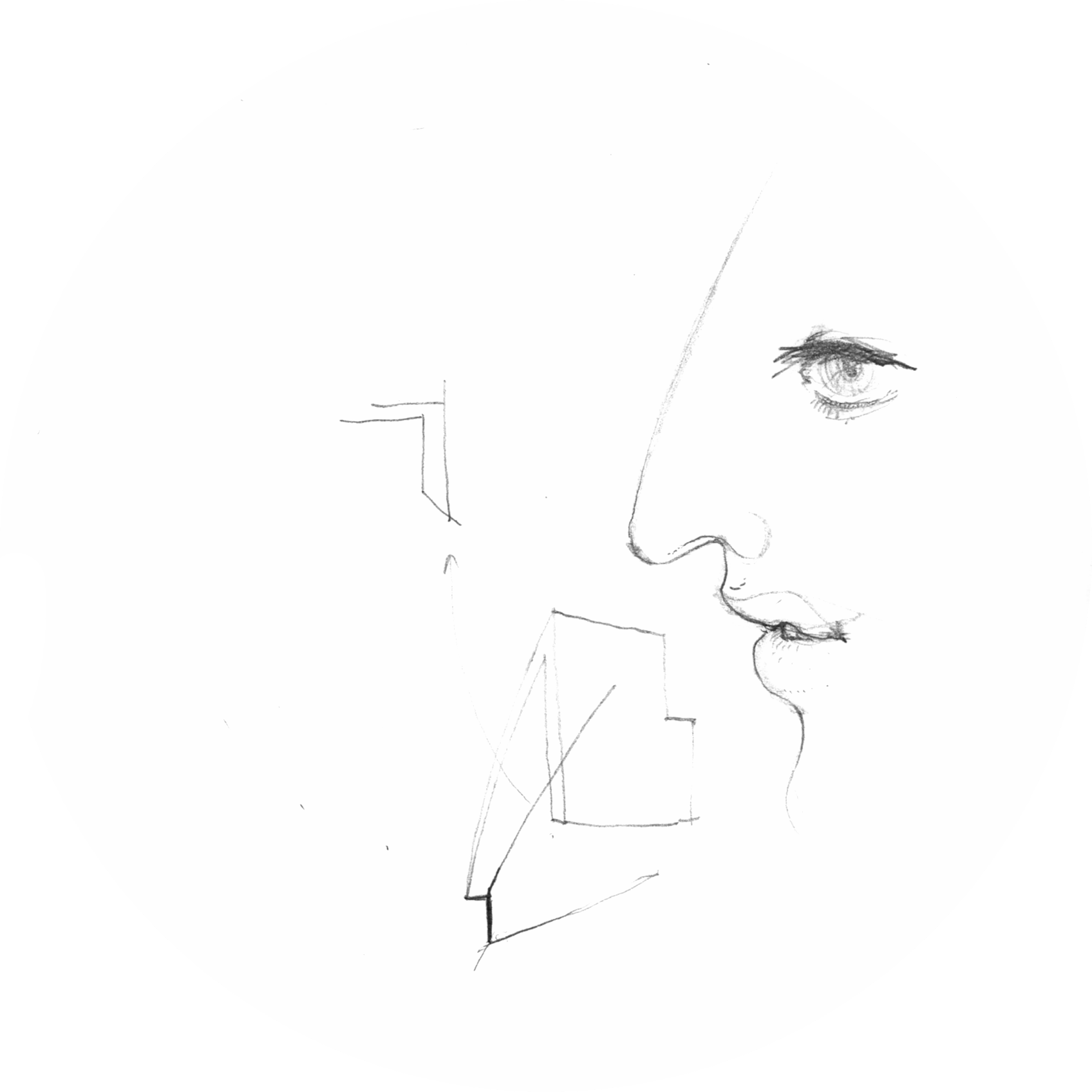
My name is Gregorio Carboni Maestri, I'm a multilingual architect, planner, historian, educator and interdisciplinary thinker born in Uccle in 1977 and raised between Italy, Belgium and Brazil. I live and work in the Brussels region and have a wonderful daughter called Nehara who lives in Berlin. I love capoeira, cycling and swimming (but practice them rarely), am a highly experienced traveller with a passion for linguistics, philosophy, psychology, sciences, semiotics, social anthropology, theatre and music (classical, funk, rock and soul). I am a tenore puro and sang in the Sarpincoro gospel band in Milan until 2010.
Childhood
My parents where explorers. They wanted me to be one as well. Since my birth in Belgium I explored with them the world, moved from a country to another without specific professional reasons. The reason was passion for humanity. I took so many airplanes as a baby that I lost my left ear drums, becoming half def. I became a wandering jew. After Belgium, we lived in Brazil, my fathers country (Porto Alegre, Rio de Janeiro, Rio Grande, Sao Paulo...); then Italy, my mothers homeland (Riviera, Milan...), then France, Spain, Portugal, and many others... I was a silent child without roots, lost in my loneliness. To give relief to this sadness, my parents gave me love, and material to draw and paint. Very fast, I found my roots, a homeland island of joy in creativity. I refuged my brain, my thoughts, in the drawing and painting, imagining new worlds, interpreting what I saw in our explorations. Compulsively. I always felt like a refugee in my own stronghold, voyaging in art-thought. I spoke six languages plus a universal one. I tried to make every culture my own culture, as if I was from all countries. A child, then a young man, then an adult, Italian in Italy, Brazilian in Brazil, Belgian in Belgium, French in France... without accents, without possibilities of being “discovered”. But I wasn't from any of those countries. Can seem banal, corny, but my country was the earth. Something transcending from “blood” or a “God”. Something intangible: words, songs, pieces of a thousands years culture, shred with many others, dreaming of a promised land. My “people”, my words, my songs, my culture, are made from pieces of this life of explorations. My religion? The ideals of brotherhood, freedom, fraternity that moved those explorations. My Jerusalem, my promise land, exist in my mind, a world without wars, without injustice, that I can only filter, describe and imagine with my art. I was a strange kid. I didn't sleep at night, worried about the problems of the world and the future of the planet. At school I was bulled for my political ideas (or, better said, because I had political ideas), my behaviour, my defence of the other bulled kids. My refuge in art became, then, even deeper: poetry, writing, scripts and drawings for imaginary cartoons and sagas, musics, photography. I traveled in worlds and images to escape from a world I didn't like, with timidity, hidden in my forest, unashamed, thinking everything I vomited with my art didn't deserved to be shared. Soon I was considered a "child prodigy", only because I could paint an oil-paint still-life with renaissance techniques or draw with the perfection of an adult.
Formation
At 11 I was accepted as a student at the Academy of Fine Arts (Académie de Saint-Gilles, 1992-95), where I was formed as a painter and cartoonist. I became a premature illustrator, one of the youngest awarded and published cartoonists in the Brazilian press from 1989 to 1997 : my drawings were published in Brazilian newspapers front-pages such as A Folha do Trabalhador, DMC Cultura, O Interior, O Jornal do Comércio, O Jornal do Sul, Oi!, Porto & Vírgula. Later, I saw my talent as being just “good technique”. It seemed to me that what I was doing did hot have sense. I got tired, intellectually bored, not seeing the social/cultural utility of it. Looking at the contemporary art, I did not find any response for that crisis. At 18, I decided to become an architect. And entering in architecture, I voluntary quit any practice of painting/drawing. The architecture killed the art. And for more than a decade, I have not touched a brush. I trained as an architect between La Cambre in Ixelles, Facoltà d’architettura Civile del Politecnico di Milano and Oporto's FAUP. In the Portuguese city I worked at CruaRB-ch for the social and architectural rehabilitation of the poor areas of UNESCO-protected historic centre. Still student, I won in 2004 the Fondazione Renzo Piano Internship, allowing me to work at RPBW on projects such as the Masterplan for the ex-Falck area in Milan; Central St. Giles Court mixed-use development in London and the skyscraper Bridge House in New York.
Laurea
I graduated with a MArch (hons.) theoretical work (tesi di laurea), under the direction of Wolf-Pritzker Prize Eduardo Souto de Moura and Orsina Pierini, on Tendenza and italophilia influences in Portuguese contemporary architecture context (Tendenze Italiane, Vie Lusitane, 450 p., 2007, Politecnico di Milano) This research project was undertook since 2001, at FAUP, and focused on the relationship between Italian and Portuguese architecture (from Alvaro Siza to the newer experiences of schools from Porto and Lisbon). A study never carried out before and that was part of a wider interest in the theories of Aldo Rossi, his book L'Architettura della Città, the Tendenza and the Italian cultural experience of the post-war period in Italy and the post-Carnation Revolution years in Portugal.
Architecture
As a practicing architect, I founded my office Gregorio Carboni Maestri Architettura in 2007, to be free to explore. I've built, had enormous responsibilities, worked with the greatest architects, collaborating on projects with Archea Associati; Antonio Citterio Patricia Viel; Storage Associati; MPartner. I worked on prestigious projects, designing buildings for the biggest luxury brands such as Prada, Bulgari, Mont Blanc, but also for society's real necessities, even if with less money. I participated in international competitions such as MEIS, the Jewish Memorial of Bologna, among others. From 2011 to 2016, I worked on the project Glossa XX1, architectural proposal to safeguard from destruction the Italian Memorial in Auschwitz in honour of the Italian killed in concentration camps (Primo Levi, BBPR, P. Samonà, L. Nono) and to integrate to it a new musicographic infrastructure. In 2016 I co-founder the Co-op. Dialéctique Architectures in Ixelles. Years of sleepless nights and difficult choices. In all those years, I've learned to be serious, professional, productive. I could start exploring, more than ever, the world, as an urbanist, as an intellectual, as a researcher, with the photography and, later, with drawings. And I wrote about the world, publishing articles. Slowly, I understood that I was doing, in my way, what the young teenager was looking for. I have realised that I was reconciled with the little boy that tried so hard to figure out what to do with his art and compulsive thoughts. The architecture made the art alive, again. Architecture for the exploration. Once again, I decided to start a new adventure.
Research
The MArch historical thesis and the complex crossed influences of its analysed period led me to return to scientific research and undertake, in 2011, a Phd on the Opposition and IAUS. My PhD, “Opposizioni: Il Memoriale italiano ad Auschwitz - «Oppositions» e la nascita della Scuola di New York”, held at the Università di Palermo (in consortium with the Accademia di Brera, Politecnico di Milano, Universities of Naples and Mediterranea of Reggio Calabria and Parma, had as advisors Sandro Scarrocchia and Kenneth Frampton, focusing on the cultural, pedagogical and editorial trajectory of the IAUS, Institute for Architecture and Urban Studies, specifically on the architectural journal Oppositions (1973-84) and the birth of what I defined the “School of New York”. In 2012 I received the Bergamo Ph.D. Prize of Architecture and became Visiting Research Scholar at the GSAPP, Columbia University until 2015. I was awarded with a Research grant from Graham Foundation in 2015 with the project “The Creation of the Kenneth Frampton Archives : a New Narrative”. I became, in 2017, Post-doctoral visiting research scholar at the Canadian Centre for Architecture. My research objective is to carry out a vast journey linking the many intellectual experiences of the 1960s and 1970s with autonomous and common characteristics: Tendenza, IAUS, the Porto school, the role of magazines, the birth of the intellectual architect, the new link with the city, history, form of architecture, politics.
Architecture, project, history, work, revolution
My research is motivated by certain concerns: architecture, work, economy, ideology. I am interested in the links between cultures, trends, languages and other communicative human phenomena, their determinations in the outskirts of the world of work. Work, seen in its most direct dimension: links between hand, brain, society, history, humanity. I try to build not a history of architecture, but to study architecture in the historical process, a global socio-history of the architectures of peoples. On these epistemological and philosophical bases, I have, during the last years, privileged certain objects of study. Parts of a larger puzzle.
(1) I am interested in the question of the Modern Movement (its historical project, its variants, its link with the social tensions of the beginning of the 20th century, its actuality) and the question of the Fine Arts, technical modernity versus the project of modernity in the United States.
(2) I devoted, on the same theoretical and methodological bases, a study to the Italian Memorial of Auschwitz, and more generally to the memorialization of one of the greatest dramas: the Nazi-fascist Holocaust. This led me to take an interest in contemporary architectural and museographic revisionism (symbolic and political).
(3) I worked on the formation of Portuguese architecture, its relationship with the dictatorship of Salazar and the Revolution of the Carnations (1974). I study the relationship of the latter with the Italian Tendenza. The genesis of this in the years of political turmoil, in Italy. and its influence in what I call the NY school (Oppositions, IAUS, Eisenman, Frampton), the link between this last experience, Tendenza, and postmodernity in general with the macroeconomic transformations of senile capitalism, its tragic ecological and macrosocial consequences linked to its today structural crisis.
(4) More directly, I study the link between architecture and the historical transformations related to the acceleration of the robotic revolution. On those topics I collaborated, as critic and theorist, with ULB’s FabLab and on a landscape-systemic energetical reconversion project in Milan’s South Agricular Park.
(5) The history and contemporary connection between the above mentioned and the pedagogy of architectural school.
I see architecture, its history, theory and contemporary critic through these elements that I consider central.
Teaching and lectures
I served as Teaching assistant to the chair from 2006 to 2013 at the Politecnico di Milano (Prof. Orsina Pierini, Oliviero Godi, Giovanni Iacometti). I am currently Visiting Lecturer at UCLouvain where I teach History of architecture: contemporary issues. I am also Maître APA at ULB where I teach architectural project. I have given conferences, lectures and reviews at a number of leading institutions in the field, including ACIRS, Académie Royale de Belgique, Accademia di Brera, Akademia Sztuk Pięknych im. Jana Matejki w Krakowie, Cardiff University, CCA, EPFL, IUAV, Politecnico di Milano, Recyclart, ULB, UMons, Università di Bologna, Università di Camerino, Università di Genova, Université de Montréal, UFRGS, UNOESC.

Publications
In the last 25 years I published a monographic fascicule (A Batalha de Genova, 2001), book chapters (Memoria, Identità, Luogo) and am also author of numerous didactic, vulgarisation and scientific articles published between Belgium, Brazil, Italy, Portugal, Russia, Spain and United States. My publications include Yale’s Constructs and Images: A Journal of Jewish Art and Visual Culture; paper and online periodicals (Alfabeta 2, América Latina en Movimiento, Arc2Città, Brasil de Fato, Bypass, Controvérsia, Correio da Cidadania, Fazendo Media, Il Voltaire, La Tribune Diplomatique, Livraisons d'Histoire d'Architecture, NON!, The Conversation, Zapruder). I collaborated with exhibits and catalogues such as House Housing: An Untimely History of Architecture and Real Estate in Nineteen Episodes / Una storia inattuale dell’architettura e dei beni immobiliari in diciannove episodi (organised by Temple Hoyne Buell Center for the Study of American Architecture, Columbia University) during the 2014 Venice Biennial of Architecture. In 2012 I organised, with the help of Peter Eisenman, a two weeklong exhibit with international conferences and debates on Auschwitz’s Italian Memorial at Brera’s San Carpoforo centre.
Cinema
I co-wrote, was scientific director and starred in the first architectural theory and history feature movie documentary for the cinema: Palladio (dir. Giacomo Gatti, prod. Magnitudo, 2019). Palladio was released in more than 450 movie theatres in Italy and around the world. Film with state-of-the-art technical means (8K HDR). A documentary successful since its launch: ranked 5th Italian box office (exceeding The Avengers, just behind Pokémon!) This feature film dedicated to Andrea Palladio, first arch-star of history, talks about the architect legacy of the architect from Padua in the contemporary world, through interviews of those who study, live and preserve his work. The film proposes a journey through breath-taking images between Brussels, the Venetian villas, ancient Rome and the United States where buildings such as the Wall Street Stock Exchange, the White House and Washington Capitol were built according to the instructions that the maestro codified in his writing: The Four Books (1570). Far from being a classic documentary, Palladio also deals with issues of pedagogy, crisis, role of history, the future of our landscape and the notion of ideology in architecture.
Community
I was advisor at Milan’s Historic Centre urban council and co-founded the think-tank IRA-C (Interaction, Research, Architecture for Crisis Contexts) with my dear friends Antonio Ottomanelli, Parasite 2.0, Salvatore Peluso and Michele Tonizzo (designer of this website), among others. I worked with young photographs such as Michele Miele and Ottomanelli on research projects about territories destroyed by war : Afghanistan, Iraq, Palestine. I am member and cultural attaché of Italijanska koordinacija za Jugoslaviju (CNJ Jugocoord) and co-founder of FILEF Belgio and Vittoria 45 in Saint-Gilles. I'm a proud member of ANPI, the Italian national association of partisans' antifascist resistance war.
Language Proficiency
- Native proficiency in French, Italian, and Brazilian Portuguese.
- Full professional fluency in European Portuguese, Castilian Spanish, and English (ETS-TOEFL score of 102, indicating a high level of proficiency; knowledge of 11,200 English word families; completed the General Academic Communication course at the CIDLV, ULB under Prof. Alexander Tabor).
Vision and Pursuits
My modest journey through life has been a tapestry woven from threads: painting, illustrations, journalism, poetry, architecture, photography, and even music. It began as a captivation and evolved into a conscious pursuit of sharing knowledge. My purpose is to assist others in comprehending the nuances of our era and the splendor we ought to cherish. In our increasingly urbanized world, unparalleled in the annals of history, we must ensure it remains a beacon of hope and a promise of a better future. To safeguard our civilization from descending into chaos, we must recognize who we are: to appreciate the simple grandeur of a sunset as well as the complexities of the cities we inhabit. I am convinced that now is the crucial moment to embrace this mission.
Orcid — Academia — Linkedin — Instagram — Google Scholar — FilmFreeWay — YouTube — Twitter
